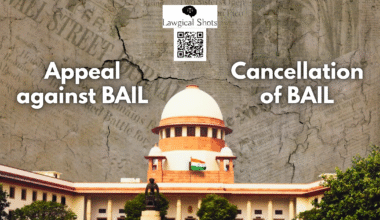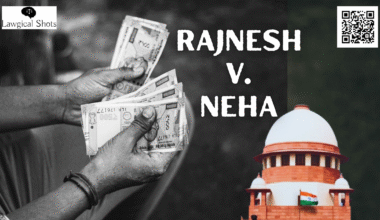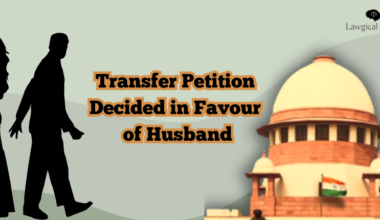What started with a religious Mutt facing challenges after acquisition of land by the State Government in terms of Land Reforms led to the Supreme Court weaving bedrock of Constitutional Law in india. Here, we are talking about the Kesavananda Bharati case, which gave birth to the Doctrine of Basic Structure curtailing the unruly powers of the Parliament amending the Constitution of India. Find here what the Supreme Court discussed in Kesavananda Bharati v. State of Kerala, going forward with laying the roots for Basic Structure Doctrine to protect the foundation of Constitution of India.
What happened in Kesavananda Bharati case?
The Supreme Court of India in Kesavananda Bharati v. State of Kerala upheld the supremacy of the Constitution of India. It further affirmed the Independence of Judiciary while protecting the basic structure of the Indian Constitution. The same limited the Parliament’s power to amend the Constitution while interpreting the crucial principles like rule of law, separation of powers, etc. The judgment serves as a check on the otherwise seemingly untamed powers of the Parliament to amend the Constitution.
Kesavananda Bharati v. State of Kerala Highlights
- The Kesavananda Bharati Case had the most lengthy proceedings which was heard for a stretch of 68 days.
- It is considered as the most important cases for shaping the present day Constitutional Law.
- The Kesavananda Bharati judgment is one among the lengthiest with 703 pages.
- The largest Supreme Court Bench was constituted in Kesavananda Bharati case with 13 Judges – Chief Justice S.M. Sikri, Justice J.M. Shelat, Justice K.S. Hegde, Justice A.N. Grover, Justice A.N. Ray, Justice P. J. Reddy, Justice D.G. Palekar, Justice H.R. Khanna, Justice K.K. Mathew, Justice M.H. Beg, Justice S.N. Dwivedi, Justice A.K. Mukherjea and Justice Y. V. Chandrachud.
- The matter was decided by 7:6 majority
- The facts of the case pertained to the restricted right to property of citizens due to Kerala’s newly framed Land Reform Laws. This led the Mutt head to challenge the same through a writ petition. However, the Supreme Court judgment in Kesavananda Bharati v. State of Kerala discussed various aspects including:
1. the definition of law under Article 13,
2. amendability of Constitution under Article 368,
3. fundamental right to property under Article 19(1)(f)
4. Saving of laws against DPSP through Article 31A, B and C
5. Directive Principles of State Policy under Article 39 (b) and (c)
6. Constitution Amendment vis-à-vis fundamental rights - The Kesavananda Bharati Case is also popular for the establishment of doctrine of basic structure.
What is the Doctrine of Basic Structure?
Basic Structure in general can be understood as the fundamental framework building the foundation of something. Coming to the Kesavananda Bharati case, the doctrine of basic structure was devised by the Supreme Court through its largest bench in this case. Since the matter revolved around whether the Parliament’s power of amendment of Constitution under Article 368 included abrogation or alteration of the basic structure or foundation of the Constitution, the same was answered in negative.
Questions that attracted Doctrine of Basic Structure
While hearing the case of Kesavananda Bharati, the Supreme Court had to address some questions pertaining to the basic structure of the Indian Constitution, such as:
- Whether the Parliament’s power to amend the Constitution extends to abrogating its basic structure?
- If Article 31(2) (providing compensation for property acquired by authorities for public purposes) abrogates the basic structure of the Constitution?
- Does the Parliament’s power to amend the Constitution under Article 368 also include power to repeal?
- If there is a basic structure of the Constitution, what are its elements?
Basic Structure Judgment
The majority of Bench – Sikri, C.J. and Shelat, Hegde, Grover, Khanna, Jaganmohan Reddy and Mukherjea, JJ. held that the Parliament’s power to amend the Constitution does not include power to alter the basic structure or framework of the Constitution thereby changing its identity. The siad point was dissented by the Supreme Court Judges – Ray, Palekar, Mathew, Beg, Dwivedi and Chandrachud, JJ. The Supreme Court had held that “Amendment within the contours of the Preamble and the Constitution cannot be said to be a vague and unsatisfactory idea which Parliamentarians and the public would not be able to understand. The true position is that every provision of the Constitution can be amended provided in the result the basic foundation and the basic structure of the Constitution remains the same.”
What does the Basic Structure of the Constitution mean?
What we can generally understand in the name of doctrine of basic structure is a sovereign democratic republic, parliamentary democracy and the three organs of the State. The Supreme Court in Kesavananda Bharati case went ahead to list down the particular elements which make up the Constitution’s foundation:
- Supremacy of the Constitution
- Republican and democratic form of government
- Secular character of the Constitution
- Separation of powers between the Legislature, the Executive and the Judiciary
- Federal character of the Constitution
The Supreme Court further explained that the basic structure of the Constitution as covered through the aforementioned pointers is founded on the basics of individual’s dignity and freedom. The same is termed to hold supreme importance, and cannot be destroyed by any form of amendment. The Apex Court further explained that the said features forming the basic structure of the Indian Constitution are easily discernible from the Preamble as well as the whole scheme of the Constitution of India.
In terms of power of amendability of the Constitution, the Court explained that the word ‘amendment’ under Article 368 does not include ‘repeal’. This means that the Parliament could amend Art. 368 and Art. 13 and also all the fundamental rights. However, the Supreme Court further made it clear that though the power to amend was wide, it was not wide enough to completely abrogate/emasculate/damage any of the fundamental rights or the essential elements in the basic structure of the Constitution, or even destroy the identity of the Constitution. The Parliament can amend each and every Article of the Constitution, but it cannot amend and expand its own powers under Article 368 to repeal or abrogate the Constitution through elements of basic structure.








